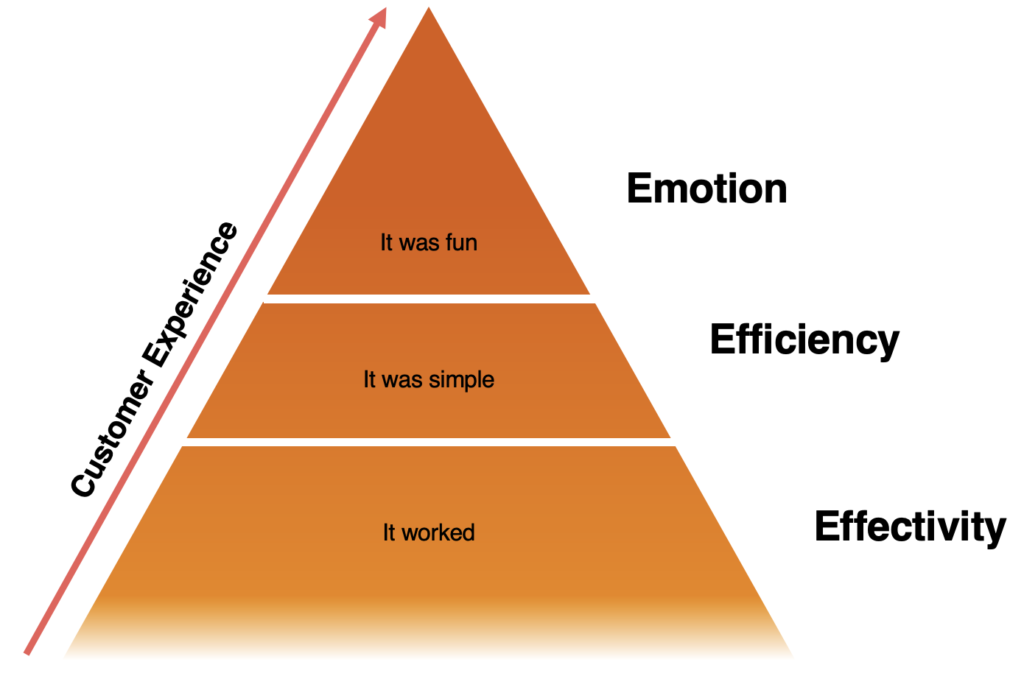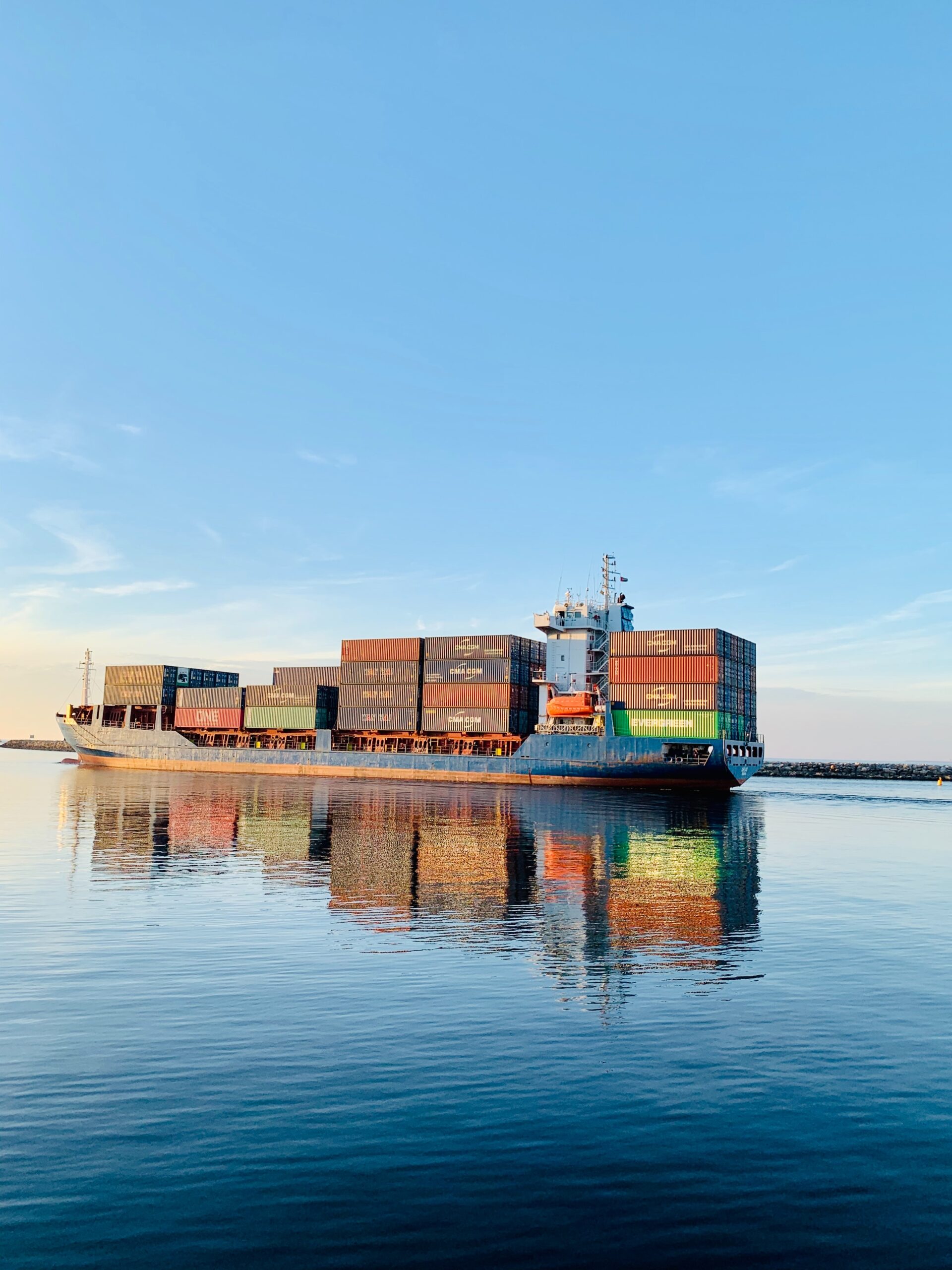There are a couple of lessons that the pandemic taught us, apart from that there are different opinions about whether Bill Gates makes us all drones via the vaccines …
The most important one is that there is a need to not only look at the demand side but to also look at the supply chain when one wants to improve the customer experience, especially when the customer intention is a purchase. You now might say that the experience happens at the touch point, which is for example the e-commerce site.
However, this is only partly true. It is important to make sure that the front end provides the right information, with good performance and without too much distraction, and to have a smooth and comfortable checkout process. In other words, provide a great e-commerce site.
Still, this is only half of the story.
And this is, where the supply chain comes into the picture.
Detour – what does the customer expect?
On the base level, a customer expects that things just work, that the vendor, and information given, is reliable and accurate, and that deliveries after order are coming fast and that there is transparency about the order and delivery status.
On top of that, customers justifiably expect that the overall process is easy for them and that their time and effort are valued by the vendor. This includes that the process works across devices and channels, without undue hassle.
Lastly, the occasional surprise cannot harm. How about over-delivery to promise? How about proactive information?
Of course, on the base level it is not possible to win a proverbial “flowerpot”, but it is here where vendors lose their customers easiest.
This model can be depicted in what I call the abbreviated Maslov pyramid of customer expectations.

Where does the supply chain come into the picture?
At some point in time, the customer will have placed the order. There is a promise to deliver, and there is the expectation of a fast delivery. Thanks to Amazon Prime for raising the bar to meet high.
In the past two years we have seen supply chains disrupted by lockdowns, by containers being stuck at the wrong place, by a container ship having an accident in the Suez Canal, by a shortage of truck drivers, even by a shortage of raw material (in the case of chips).
In combination with a frequently applied just-in-time strategy that essentially keeps as much stock as possible on the road and not in distribution centers these situations led to product being either not delivered, sometimes not even manufactured. The consequence: the customer’s order is not fulfilled or fulfilled late.
As customers already have learned that delivery happens on short notice, this has become an expectation. An unfulfilled expectation in this case. Hence an inferior customer experience.
So, there is a double challenge, one on the demand side, and one on the supply side.
The demand side is fairly easy to address
As said before, an important part of solving the demand challenge is an e-commerce presence, along with the ability to digitally engage with the customers – and to deliver to them at the end of the day. To accomplish this, there are e-commerce systems that are as easy to implement as for example Shopify, up to high end systems that basically resemble a tool box that can be assembled to support any particular need. Example for this would be Spryker or solutions the likes of CommerceTools, SAP Commerce, via Salesforce Commerce, Magento, Intershop, and many more that have less of a toolbox character.
All of them allow customers to browse and buy from basically every digital premise, including services like Tik Tok, Instagram, We Chat, WhatsApp or one of the other ones that are available galore.
The supply side is not as easy to address
Now that the commerce system is set up, happy customers are ordering all the good stuff.
Which needs to be sourced and delivered.
And this is where the challenge starts.
The supply chain is optimized.
Optimized for cost minimal, regularly for just-in-time delivery. Often there is only one supplier of choice for products, because of scaling effects that can be used and that help at least two sides by increasing volume (good for the supplier) and decreasing price (good for the buyer and maybe for the end customer).
A supply chain like this is easy to manage and it works well – as long as it is working.
Enter Covid or one of the other disruptions I mentioned above.
All of the sudden this supply chain does not work anymore.
The solution for this cannot be covered by a system only. Instead, this needs a more fundamental change. It needs a change of strategy. The supply chain must be optimized using another set of objectives and KPIs than cost and simplicity. There must be a higher resilience against events like these built in, too. So, besides cost, it is important to look at reliability and speed, as these address two of the core customer demands in the pyramid of customer expectations.
And that means reducing choke points and single points of failure. It might mean using more than one supplier to source single parts or products. It might mean looking at the location of the supplier and whether there are alternate means of transportation, if needs be. It might mean looking at the own value chain, answering the questions “Which other suppliers can I work with?” and “Do I need to insource more of my value chain and, if so, which parts?”. Answering these questions then might lead to a fundamental follow-up question: “Do I need to reposition my brand”?
A brand repositioning might be necessary due to possible price or quality changes that do not resonate with the existing brand message when addressing the supply chain challenge. As a brand repositioning is a major act, companies tend to avoid this, especially if it were only for operational reasons.
How to address the customers’ expectations?
To do this, we need to look at two layers, one the transparency and communications layer and then the underlying supply chain itself.
The easy part
In the case of accurate information and transparency, this is actually be pretty easy. For a business, make sure you know your inventory and its location. With RFID, the necessary technology to track movements exists for quite some time. Name it the Internet of Things if you want a more fancy name. Put the product on a truck. You know which truck it is on. The truck has a GPS, which makes its position known. The customer could know at any time where the purchase is. Up to the meter. Delivery services already often use this.
Ah, the goods are in a container and on a ship? Well, the container is tracked, too. So is the ship. In the case of the ship, this is even public information. Use it, and offer it to the customer. This is no rocket science and gives a good deal of transparency and enables the update of expected delivery times (remember the traffic jam at the Suez Canal?).
What is remaining is to not ask the customer to switch from one app or site to another to get the information.
The hard part
The harder problem to solve is the one of reliability. What we have learned is that supply chains are pretty reliable as long as there is no disturbance. They, however, are not quite resilient. And this affects the customer experience.
There are five basic ways that can increase the customer experience by addressing the supply chain side from sourcing to delivery to the customer.
The simplest approach is to increase stock in the own warehouses. While this does not fix the challenge completely, it provides a larger buffer until shortages take effect than a just-in-time strategy.
A bit more challenging is having a look at existing suppliers with the objective of determining whether and how they could supply necessary goods from more than one site. With these sites being at different locations, ideally combining nearshoring and offshoring, this will also allow for employing different modes of transportation, like trains and trucks as opposed to ships. Again, the result is more resilience.
A variation of this approach is to become a member of a larger marketplace. Often, it is possible to use business networks like Ariba to source necessary goods from different vendors if needs be.
Insource more of the production and produce closer to where the parts are needed. This is for sure a more long-term strategy that will take time to be implemented. In times of rising energy cost and increasing degrees of automation, this still might be one of the more important ones.
The last one would be insourcing the transport itself and becoming your own transportation company. Of course, this needs scale and a lot of capital. On the upside, owning containers, chartering ships, and trucks for long haul as well as the last mile creates quite some independence. E.g., use smaller harbors, which are cheaper and less congested. Or deviate your own ships from one harbor to another one. Amazon does this quite successfully.
What these strategies have in common is that they require a careful and regular check of what is important for the business and even “core” to the business. Usually, the word of “concentration on the core business” means more outsourcing.
Maybe, we need a change towards more insourcing to support better customer experiences.

